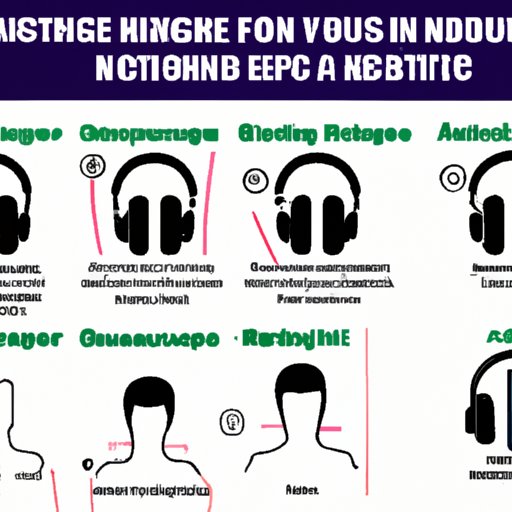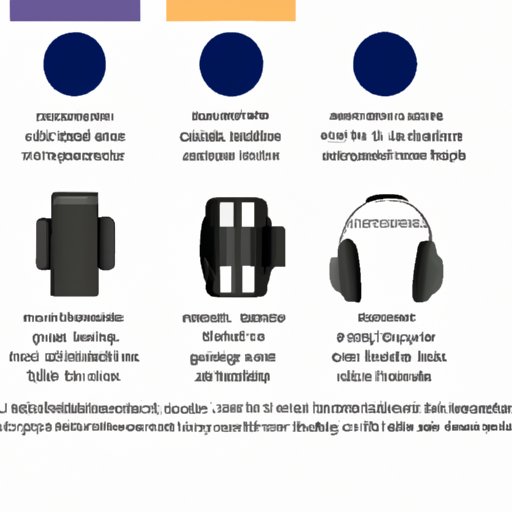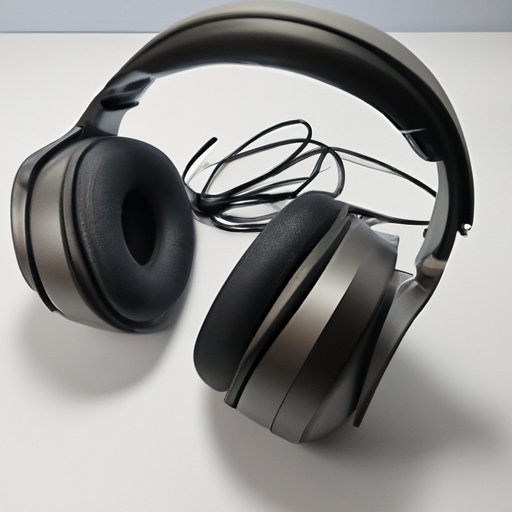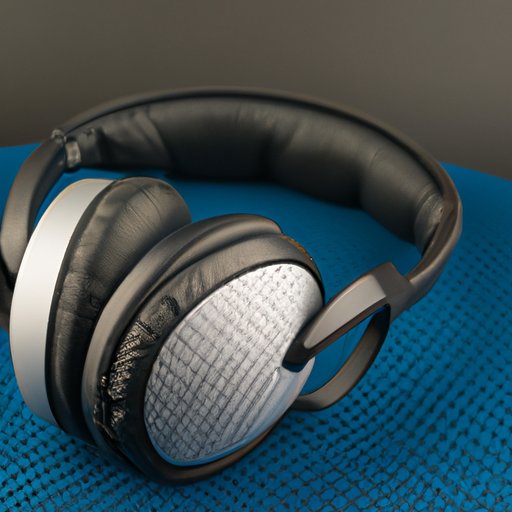Introduction
Noise cancelling headphones have become increasingly popular in recent years for their ability to block out unwanted sounds and improve sound quality. But how do these headphones work? In this article, we’ll explore the science behind noise cancelling headphones and provide a comprehensive guide to understanding how they work.
Exploring the Science Behind Noise Cancelling Headphones
Before we dive into how noise cancelling headphones work, it’s important to understand the science behind sound waves and frequencies. Sound is made up of vibrations that travel through the air and are detected by our ears. These vibrations are measured in Hertz (Hz) which is the unit of frequency. Low frequencies are deep and bass-heavy while high frequencies are more tinny and sharp.
Noise cancellation technology works by using microphones to detect incoming sound waves and then generating an “anti-noise” wave that cancels out the original sound. This is done by creating a sound wave with the same amplitude but opposite phase, which effectively reduces the overall noise level.

A Guide to Understanding How Noise Cancelling Headphones Work
Now that we have a better understanding of the science behind noise cancellation, let’s take a look at how it works in headphones. There are two types of noise cancellation: active and passive. Active noise cancellation uses microphones to detect incoming sound waves and then generates an “anti-noise” wave. Passive noise cancellation, on the other hand, relies on sound-dampening materials such as foam or silicone to absorb sound waves before they reach the ear.
Noise cancelling headphones use both active and passive noise cancellation technologies. They also employ different technologies such as headphone design, microphones, and digital processors to achieve the desired effect. Let’s take a closer look at each of these.
Noise Cancelling Headphones: How Do They Really Work?
Noise cancelling headphones are designed to reduce background noise. They do this by using a combination of active and passive noise cancellation technologies. The headphones use microphones to detect incoming sound waves and then generate an “anti-noise” wave that cancels out the original sound. This is done by creating a sound wave with the same amplitude but opposite phase, which effectively reduces the overall noise level.
Noise cancelling headphones can be used in a variety of situations, including when traveling on an airplane or train, in the office, or even at home. They can help to reduce distractions and improve focus and concentration. Additionally, they can enhance sound quality by blocking out background noise and providing a more immersive listening experience.

A Breakdown of the Different Technologies Used in Noise Cancelling Headphones
Noise cancelling headphones use several different technologies to achieve their desired effect. The most important of these include:
- Headphone design – Noise cancelling headphones are designed to fit snugly around the ears, allowing them to block out external noise.
- Microphones – Microphones are used to detect incoming sound waves and generate an “anti-noise” wave that cancels out the original sound.
- Digital processors – Digital processors are used to analyze incoming sound waves and generate the necessary “anti-noise” wave.

The Benefits of Using Noise Cancelling Headphones for Work and Travel
Noise cancelling headphones offer a variety of benefits for both work and travel. They can help to reduce distractions and improve focus and concentration, enabling you to stay productive even in noisy environments. Additionally, they can enhance sound quality by blocking out background noise and providing a more immersive listening experience.
Noise cancelling headphones can also be used to increase comfort. By reducing external noise, they can make long journeys more comfortable and enjoyable. Furthermore, they can help to protect your hearing by reducing the need to turn up the volume to drown out background noise.
Conclusion
Noise cancelling headphones are becoming increasingly popular for their ability to block out unwanted sounds and improve sound quality. This article has explored the science behind noise cancelling headphones and provided a comprehensive guide to understanding how they work. We’ve discussed the different technologies used, such as headphone design, microphones, and digital processors, as well as the benefits of using noise cancelling headphones for work and travel. Ultimately, noise cancelling headphones can help to reduce distractions and improve focus and concentration, making them a great choice for anyone looking for a more immersive listening experience.
No matter what your needs are, noise cancelling headphones can provide a comfortable, enjoyable listening experience. With so many different options available, there’s sure to be a pair that’s perfect for you.
(Note: Is this article not meeting your expectations? Do you have knowledge or insights to share? Unlock new opportunities and expand your reach by joining our authors team. Click Registration to join us and share your expertise with our readers.)
